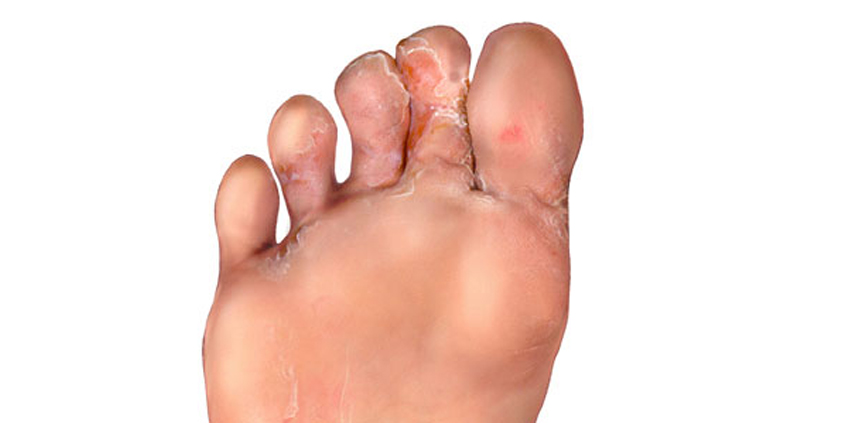Athlete’s Foot
What is it?
Athlete’s foot, known medically as tinea pedis, is a common skin infection of the feet caused by fungus. It is characterised by itching, scaling, redness, and the formation of small blisters on the skin. Athlete’s Foot fungus can infect any part of the foot, however it most commonly starts in between the toes. The condition can progress to effect the toenails, causing them to become thickened, discoloured, and painful. The fungus is usually acquired by coming into contact with infected skin, or from the environment. A common environment to get athletes foot includes swimming pool surrounds and locker/change rooms. This is why it is called “Athlete’s” Foot even though it effects non-athletes as well.
4 Life Podiatry
If you develop tinea it is recommended that you see a podiatrist. Whilst most fungal infections can be treated fairly easily with the use of topical anti-fungal agents such as sprays, powders, creams and gels, others can be extremely stubborn and difficult to get rid of. Typically, the earlier you seek treatment for Athlete’s Foot the easier it is to treat. Sometime prescription medication is required to treat Athlete’s Foot and your podiatrist can advise you to get a prescription if this is required. It is important that the right treatment is prescribed and keep in mind that you may be required to apply the treatment for up to 45 days.
Prevention & Home Management Strategies
In addition to seeking the right treatment for your fungal infection, there are several things that you can do yourself to help treat and prevent recurrence of Athlete’s Foot. Because fungus loves warm and moist conditions, it is important to keep your feet dry and your shoes well aired. Wearing shoes with a breathable upper, such as leather, can help to keep the inside of the shoe dry. Socks should always be worn with shoes and be made from natural materials such as cotton. Typically it is between the toes where Athlete’s Foot thrives, so be sure to clean this area and dry thoroughly before putting on shoes. The following is a good summary of prevention strategies:
- Keep your feet and toes dry and clean
- Change your shoes and socks regularly
- Air your shoes regularly and give a short spray of “Glen 20” or similar
- Exfoliate your feet on a weekly basis to remove dead skin cells and callus on your feet
- Make sure you wear thongs in public showers and wet areas
- Keep your shower clean and dry. Regular cleaning, including spraying with an antifungal cleaner, helps prevent reinfection.

